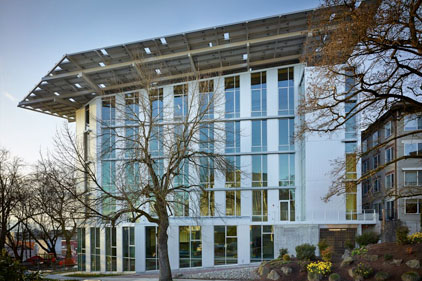
|
| The Bullitt Center includes a 26-bore, 400 foot-deep geoexchange HVAC system that will use geothermal energy from the earth to provide efficient heating and cooling. |
PAE, a leading West Coast engineering firm specializing in sustainable design, provided energy modeling and mechanical and electrical engineering for the building, plus lighting design through its Luma Lighting division. PAE will also lease half of the top floor of the building. The Bullitt Foundation will be located on the same floor and share conference and kitchen space with PAE.
“Everyone at PAE is elated about the completion of this truly significant project,” said Paul Schwer, president of PAE. “The Bullitt Center will pave the way for future Living Building facilities of its size, a movement we feel passionate about and are certain will continue to grow as the industry looks to design more net zero energy and water buildings.”
The building is designed to use 83 percent less energy than a typical Seattle office building and achieve net zero energy and net zero water through a variety of systems, including:
• A 26-bore, 400-foot-deep geoexchange HVAC system that will use geothermal energy from the earth to provide efficient heating and cooling.
• A radiant floor system to efficiently heat and cool office spaces.
• A high-performance building envelope.
• A 242 kW rooftop solar photovoltaic array designed to provide all the net energy needed for the building.
• A layout designed to optimize natural light — an estimated 82 percent of the Bullitt Center’s spaces will be lit by natural sunlight.
• Careful coordination with tenants to reduce their plug loads by over 75 percent through the use of high-efficiency monitors, copiers, laptops, zero clients and cloud based servers.
• Rainwater and greywater reclamation systems including a 56,000-gallon cistern to capture rainwater and a constructed wetland to treat greywater.
• Foam flush, composting toilets to reduce toilet water consumption by 96 percent.
For more information, visit www.pae-engineers.com.
Publication date: 4/22/2013


Report Abusive Comment